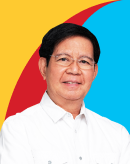Execs conclude Baguio traffic system failure
BAGUIO CITY—The traffic system of the country’s summer capital is failing, so both police and local officials have asked motorists to cooperate with a P3.2-million urban transport study that hopes to resolve the city’s nagging problems on parking and narrow roads.
Despite various traffic rerouting experiments, the police have concluded that Baguio has “a poor traffic system [that is aggravated by the fact that] we are also running out of space for parking,” said Supt. James Logan, chief of the police’s traffic management branch.
Logan and various transport leaders held a March 28 news conference to explain why the government had commissioned the National Center for Transportation Studies of the University of the Philippines in Diliman to study Baguio traffic and to develop a long-term solution to its problems.
Government consultant Marc de Guzman, a civil transportation and structural engineer, said he pursued this study in 2006, and had presented the project proposal to the city planning and development office. The government did not act on the proposal until recently, he said.
“We need a definite transportation plan to see the effects of congestion. At present, the traffic system is experimental and we do not know if it will last for 10 years. We need a scientific study to project (the traffic system) in the next 20 years,” De Guzman said.
The city has 345.6 kilometers of inner city and suburban roads, which were not designed to serve the current volume of Baguio vehicles, he said.
According to city records, 3,900 privately-owned vehicles used these roads in 2009. By 2010, the number doubled to 6,892 private vehicles.
These city roads also accommodated 15,200 public utility vehicles in 2009. The number of jeepneys and taxis increased to 18,346 in 2010, said De Guzman, a member of the city’s transportation and traffic management committee (TTMC).
He said the city will need to determine if vehicular flyovers and overpasses remain feasible solutions to Baguio’s traffic woes.
Ted Tan, a former traffic engineer of the Metropolitan Manila Development Authority (MMDA) now serving the TTMC, said Baguio’s three major problems are dwindling parking spaces, the absence of PUV terminals, and the small number of government employees tasked to manage traffic each day.
He said a multilevel parking facility could be key to solving one crisis, but not the rest of the traffic problems.
“Resolving the traffic [crisis] later will be more costly in the future… Traffic is an evolving problem in progressive cities,” he said.
Logan said motorists have not been helpful either. “From January to December 2011, we arrested 39,000 traffic violators. [We recorded] 80 apprehensions a day, and the common violation was illegal parking,” he said.































